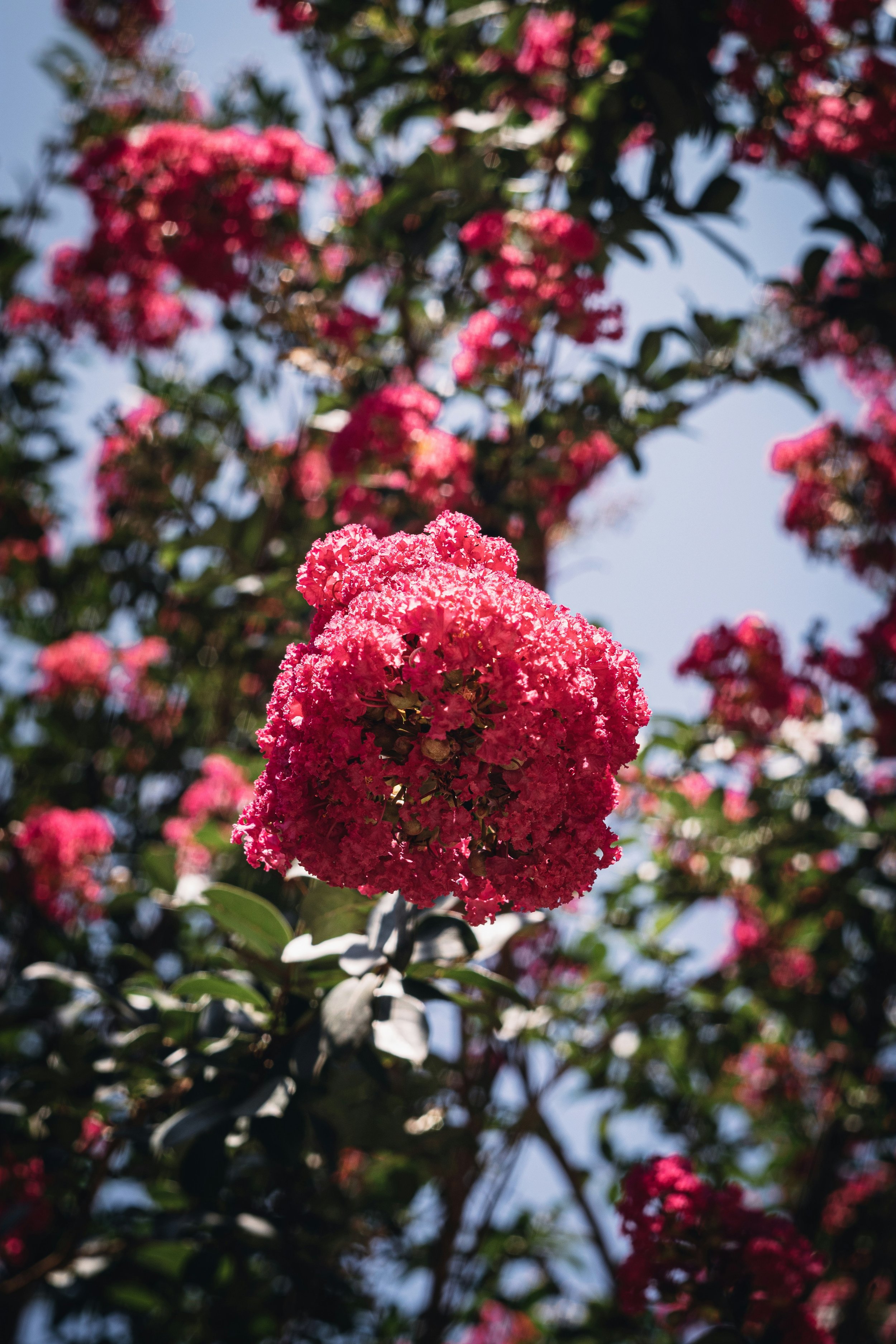When to Plant Crepe Myrtles for Optimal Growth
Discover the best time to plant crepe myrtles for optimal growth in our comprehensive guide! Learn about planting tips, care techniques, and maintenance for these stunning flowering trees.
If you’re looking to add a splash of color to your garden, crepe myrtles are a fantastic choice! Known for their vibrant blooms and beautiful bark, these trees can transform any landscape. However, like all plants, they require a bit of TLC to thrive. One of the most crucial aspects of their care is knowing when to plant crepe myrtles for optimal growth.
In this guide, we’ll dive into the best planting times, environmental factors, and tips to help your crepe myrtles flourish. Whether you're a seasoned gardener or a novice, understanding the ins and outs of planting can make all the difference. Let’s get started!
Understanding Crepe Myrtles
What Are Crepe Myrtles?
Crepe myrtles (Lagerstroemia indica) are deciduous trees or large shrubs native to Asia. They’re beloved for their stunning flowers that bloom in summer, ranging from white and pink to red and purple. Plus, they feature beautiful, exfoliating bark that adds character to your garden year-round.
Ideal Growing Conditions
Before we discuss when to plant crepe myrtles, it’s essential to understand their growing conditions:
Sunlight: Crepe myrtles love the sun! They thrive in full sunlight, needing at least 6 hours of direct sunlight each day.
Soil Type: Well-drained, loamy soil is ideal. They can tolerate various soil types but avoid heavy clay or poorly drained areas.
Climate: These trees flourish in USDA Hardiness Zones 7 through 9. They can withstand heat and drought but aren’t fond of extreme cold.
When to Plant Crepe Myrtles for Optimal Growth
Best Time to Plant
The best time to plant crepe myrtles is in the spring or early summer when the soil has warmed up, and there’s no longer a risk of frost. Here’s a breakdown of the timing:
Spring Planting: Spring planting is best done from late March to early June, after the last frost has passed. This timing allows plants to establish strong roots throughout the growing season, giving them ample time to thrive and flourish in warmer temperatures, ensuring a successful and healthy garden.
Summer Planting: Summer planting is possible, but it’s important to be cautious of extreme heat. Ensure new plants receive plenty of water to help them establish roots and adjust to the hot conditions. This will support their growth and prevent stress from high temperatures, ensuring a healthy start for your plants.
Seasonal Considerations
Understanding the seasons can help you choose the perfect time for planting:
Spring: Spring is the ideal season for planting crepe myrtles, as the soil is warming and the risk of frost is minimal. Planting in spring allows the trees to establish their roots before the heat of summer arrives, giving them the best chance for healthy growth and vibrant blooms.
Summer: If you miss the spring window, planting in early summer can work. Just be prepared to water frequently, especially during heatwaves.
Fall and Winter: Avoid planting in the fall, as it can be too late for the trees to establish roots before the frost. In winter, the ground is often too hard to work with, and the plants are dormant.
Preparing to Plant Crepe Myrtles
Selecting the Right Location
When deciding when to plant crepe myrtles, also consider their location in your yard. Choose a spot that meets their sunlight requirements and has well-draining soil. Make sure there's enough space for them to grow tall and wide without obstruction from other plants or structures.
Soil Preparation
Good soil is key for a healthy plant. Before planting:
Test the Soil: Test your soil to determine its pH levels and nutrient content. Crepe myrtles thrive in slightly acidic to neutral soil, with a pH range of 6.0 to 7.0. Conducting a soil test ensures your plants receive the proper conditions for healthy growth and vibrant blooms.
Amend the Soil: Amend the soil by adding compost or organic matter to improve its structure and nutrient content. This enhances soil fertility, helping crepe myrtles establish strong, healthy roots. Amending the soil ensures better growth and overall plant health, providing the right environment for your trees to thrive.
Choosing the Right Variety
There are many varieties of crepe myrtles, each with its own growth habits and colors. When planning for when to plant crepe myrtles, select a variety that suits your landscape and climate.
Dwarf Varieties: Great for smaller gardens or containers.
Medium to Large Varieties: Perfect for creating privacy screens or focal points in larger landscapes.
Step-by-Step Guide to Planting Crepe Myrtles
Tools You'll Need
Gather the following tools before you begin planting:
Shovel: For digging holes.
Garden Trowel: Useful for planting smaller varieties.
Rake: To level the soil.
Watering Can or Hose: For watering the plants after planting.
Mulch: Helps retain moisture and suppress weeds.
Step-by-Step Instructions
1. Digging the Hole
When planting a crepe myrtle, dig a hole twice as wide and as deep as the root ball. This extra width provides ample space for the roots to spread out comfortably, promoting healthy growth and ensuring the tree establishes itself well in its new location.
2. Preparing the Plant
Carefully remove the crepe myrtle from its container to avoid damaging the roots. If the roots are tightly bound, gently loosen them with your hands or a small tool. This helps the roots spread more easily in the soil, encouraging healthy growth and establishment.
3. Placing the Plant
Place the crepe myrtle in the center of the hole, ensuring the top of the root ball is level with the surrounding soil surface. Proper positioning allows for optimal root growth and prevents issues like water pooling, ensuring the plant establishes itself successfully.
4. Backfilling the Hole
Fill the hole with the original soil, gently patting it down as you progress to eliminate air pockets that could hinder root growth. Ensure the soil remains level with the root ball, taking care not to bury the tree trunk, which can lead to rot or disease.
5. Watering
After planting your crepe myrtle, water it thoroughly to help settle the soil around the roots and eliminate any remaining air pockets. This ensures good soil-to-root contact, promoting healthy root establishment and giving the tree a strong start in its new environment.
6. Mulching
Add a layer of mulch around the base of the plant to help retain moisture and suppress weeds. Ensure you leave a few inches of space around the trunk to prevent moisture buildup that could lead to rot. Mulch also helps regulate soil temperature, promoting healthy root growth and providing additional nutrients as it breaks down, ultimately supporting your crepe myrtle’s overall health and vigor.
Caring for Your Crepe Myrtles
Watering
After planting, water your crepe myrtles deeply once a week, especially during dry spells. This helps establish strong roots.
Fertilizing
In the spring, apply a balanced fertilizer to encourage healthy growth. Follow the package instructions for application rates.
Pruning
To keep your crepe myrtles in shape and promote blooming, prune them in late winter or early spring before new growth begins.
Tip: Remove any dead or crossed branches and shape the plant as desired.
Pest and Disease Management
Keep an eye out for common pests like aphids and spider mites. If you notice any issues, treat them promptly with insecticidal soap or neem oil.
Conclusion
Knowing when to plant crepe myrtles for optimal growth can make a significant difference in their success. With proper timing, care, and attention, these stunning trees can thrive in your garden, providing beauty and color for years to come. So, whether you're planting in spring or early summer, just follow the steps in this guide, and you'll be well on your way to enjoying a vibrant display of blooms! Happy gardening!
Frequently Asked Questions
1. Can I plant crepe myrtles in the fall?
It's best to avoid fall planting because the roots may not have enough time to establish before winter.
2. How much sunlight do crepe myrtles need?
Crepe myrtles thrive in full sunlight, requiring at least 6 hours of direct sun daily.
3. What is the best soil type for crepe myrtles?
Well-draining, loamy soil is ideal. They can tolerate various soil types but avoid heavy clay.
4. How often should I water my crepe myrtles?
Water deeply once a week, adjusting based on rainfall and temperature.
5. How can I prevent pests on my crepe myrtles?
Regularly check your plants for signs of pests and treat any issues promptly with appropriate insecticides.
Stay up to date with our latest ideas!








